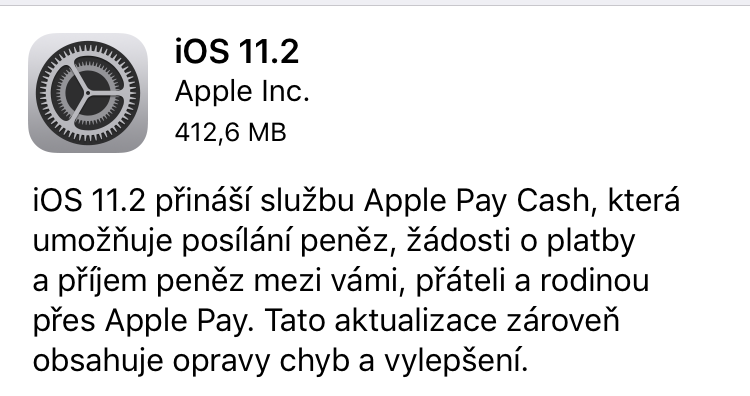The last time we looked at how the new operating system iOS 11 is doing, in terms of prevalence, was on 52% of all active iOS devices. These were data from the beginning of November and again confirmed the trend, which clearly shows that the "eleven" is not experiencing as successful a start as its predecessors. Now a month has passed and according to Apple's official data, it looks like iOS 11 adoption has moved from 52% to 59%. The data is measured as of December 4, and a seven-percent month-over-month increase is probably not what Apple expected from the new system…
It could be interest you

Currently, iOS 11 is logically the most widespread system. Last year's version number 10 is still installed on 33% of iOS devices and 8% still have some older versions. If we look at how iOS 10 performed at this time a year ago, we can see that it was ahead of the current version more than 16%. On December 5, 2016, the then new iOS 10 was installed on 75% of all iPhones, iPads and compatible iPods.
It could be interest you

So iOS 11 is definitely not doing as well as people at Apple expected. There are several reasons for the lower level of prevalence. According to comments on foreign (as well as domestic) servers, these are primarily problems with the stability and debugging of the entire system. Many users are also annoyed by the absence of the option to go back to iOS 10. A significant part also does not want to say goodbye to their favorite 32-bit applications, which you can no longer run in iOS 11. How are you doing? If you have an iOS 11 compatible device but are still waiting to update, why are you doing so?
Unfortunately, I also have iOS 11 – on an ipad air;) the battery life has dropped enormously, the keyboard on the ipad is terrible – imagine that you switch from an iPhone to an ipad and some characters are completely different (such as the hyphen … they also moved the punctuation marks) – that is, the keyboard it's confusing and then we have the app constantly crashing/freezing the ipad... When iOS 11 came out I had to restart the ipad 3 times a day, fortunately thanks to the fact that I update regularly, now I restart the ipad "only" once a day :) …..that's why I have a question - an acquaintance still has iOS 10 on his iPhone and I want to ask if it would be possible to back up his iPhone to iTunes and restore the backup to my iPad. It will work? will iOS 10 stay there? or will it force me to update to iOS 11? (I would delete his data, of course) If anyone has experience with this, I would be happy for any answer :) I haven't looked for the answer yet. Thank you
It won't go the way you imagine. When you back up, you only back up data, settings, not the operating system.
Personally, I have ios 11 and I have no problem on IP x.
But ip6 slowed it down for me, I'll try to do a complete restore there and not OTA, how did I install ios 11
iOS on iP SE absolutely horrible: lags of 10-30 seconds (showing the keyboard, restoring the application, launching the application, camera), shrunk keyboard overlapping somewhere, shrunk screen rotation, battery life dropped from 6-7h to 3h, applications crash every now and then, incl. the native ones from Apple, the display of web pages is shrunk, multitasking is terrible... logging into networks is sad, BT management, wifi is shriveled, etc. etc. I don't understand it and it's not better even after 3 patches. I'm hoping to get an iP SE 2 soon that will run normally as I've lost faith in Apple fixing this. Meanwhile, iOS 10 worked just fine.
I also had terrible problems with 11 on SE, but after 11.2 it's almost fine.
For me, on the other hand, every next version breaks something that worked before. For example, now after 11.2, unlocking the iPhone stopped working other than via touch id. I.e. wearing gloves, or pressing the home button with another finger, nothing happens, the dial pad for entering the numeric code does not appear. While the button works, a double press will launch Siri.
That's pretty weird. The unlocking works flawlessly for me all the time. I was kind of hoping that the tuning would be better here with the same configurations, not like WP and it didn't.
It works fine via Touch ID. Before 11.2 it worked relatively normally. The "best" is when the unlocking animation gets stuck in the middle and nothing happens for 30 seconds and the phone is uncontrollable, only the bottom half of the screen is visible. I wanted to take a screenshot of it, but that doesn't work either. Or the clever trick when multi-tasking after switching to the application displays a saved screenshot from the application, but it logically does not respond for 30s - how could the image also...
Considering that the update is indiscriminately forced, these numbers have no meaning at all